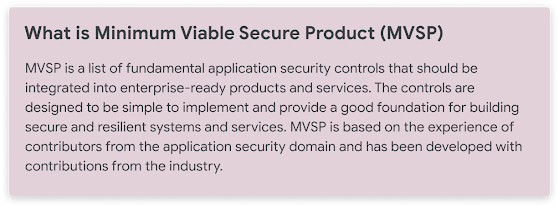The Domain Name System (DNS) is a fundamental protocol used on the Internet to translate human-readable domain names (e.g., www.example.com) into numeric IP addresses (e.g., 192.0.2.1) so that devices and servers can find and communicate with each other. When a user enters a domain name in their browser, the DNS resolver (e.g. Google Public DNS) locates the authoritative DNS nameservers for the requested name, and queries one or more of them to obtain the IP address(es) to return to the browser.
When DNS was launched in the early 1980s as a trusted, content-neutral infrastructure, security was not yet a pressing concern, however, as the Internet grew DNS became vulnerable to various attacks. In this post, we will look at DNS cache poisoning attacks and how Google Public DNS addresses the risks associated with them.
DNS Cache Poisoning Attacks
DNS lookups in most applications are forwarded to a caching resolver (which could be local or an open resolver like. Google Public DNS). The path from a client to the resolver is usually on a local network or can be protected using encrypted transports like DoH, DoT. The resolver queries authoritative DNS servers to obtain answers for user queries. This communication primarily occurs over UDP, an insecure connectionless protocol, in which messages can be easily spoofed including the source IP address. The content of DNS queries may be sufficiently predictable that even an off-path attacker can, with enough effort, forge responses that appear to be from the queried authoritative server. This response will be cached if it matches the necessary fields and arrives before the authentic response. This type of attack is called a cache poisoning attack, which can cause great harm once successful. According to RFC 5452, the probability of success is very high without protection. Forged DNS responses can lead to denial of service, or may even compromise application security. For an excellent introduction to cache poisoning attacks, please see “An Illustrated Guide to the Kaminsky DNS Vulnerability”.
Cache poisoning mitigations in Google Public DNS
Improving DNS security has been a goal of Google Public DNS since our launch in 2009. We take a multi-pronged approach to protect users against DNS cache-poisoning attacks. There is no silver bullet or countermeasure that entirely solves the problem, but in combination they make successful attacks substantially more difficult.
RFC 5452 And DNS Cookies
We have implemented the basic countermeasures outlined in RFC 5452 namely randomizing query source ports and query IDs. But these measures alone are not sufficient (see page 8 of our OARC 38 presentation).
We have therefore also implemented support for RFC 7873 (DNS Cookies) which can make spoofing impractical if it’s supported by the authoritative server. Measurements indicate that the DNS Cookies do not provide sufficient coverage, even though around 40% of nameservers by IP support DNS Cookies, these account for less than 10% of overall query volume. In addition, many non-compliant nameservers return incorrect or ambiguous responses for queries with DNS Cookies, which creates further deployment obstacles. For now, we’ve enabled DNS Cookies through manual configuration, primarily for selected TLD zones.
Case Randomization (0x20)
The query name case randomization mechanism, originally proposed in a March 2008 draft “Use of Bit 0x20 in DNS Labels to Improve Transaction Identity”, however, is highly effective, because all but a small minority of nameservers are compatible with query name case randomization. We have been performing case randomization of query names since 2009 to a small set of chosen nameservers that handle only a minority of our query volume.
In 2022 we started work on enabling case randomization by default, which when used, the query name in the question section is randomized and the DNS server’s response is expected to match the case-randomized query name exactly in the request. For example, if “ExaMplE.CoM” is the name sent in the request, the name in the question section of the response must also be “ExaMplE.CoM” rather than, e.g., “example.com.” Responses that fail to preserve the case of the query name may be dropped as potential cache poisoning attacks (and retried over TCP).
We are happy to announce that we’ve already enabled and deployed this feature globally by default. It covers over 90% of our UDP traffic to nameservers, significantly reducing the risk of cache poisoning attacks.
Meanwhile, we maintain an exception list and implement fallback mechanisms to prevent potential issues with non-conformant nameservers. However we strongly recommend that nameserver implementations preserve the query case in the response.
DNS-over-TLS
In addition to case randomization, we’ve deployed DNS-over-TLS to authoritative nameservers (ADoT), following procedures described in RFC 9539 (Unilateral Opportunistic Deployment of Encrypted Recursive-to-Authoritative DNS). Real world measurements show that ADoT has a higher success rate and comparable latency to UDP. And ADoT is in use for around 6% of egress traffic. At the cost of some CPU and memory, we get both security and privacy for nameserver queries without DNS compliance issues.
Summary
Google Public DNS takes security of our users seriously. Through multiple countermeasures to cache poisoning attacks, we aim to provide a more secure and reliable DNS resolution service, enhancing the overall Internet experience for users worldwide. With the measures described above we are able to provide protection against passive attacks for over 90% of authoritative queries.
To enhance DNS security, we recommend that DNS server operators support one or more of the security mechanisms described here. We are also working with the DNS community to improve DNS security. Please see our presentations at DNS-OARC 38 and 40 for more technical details.



